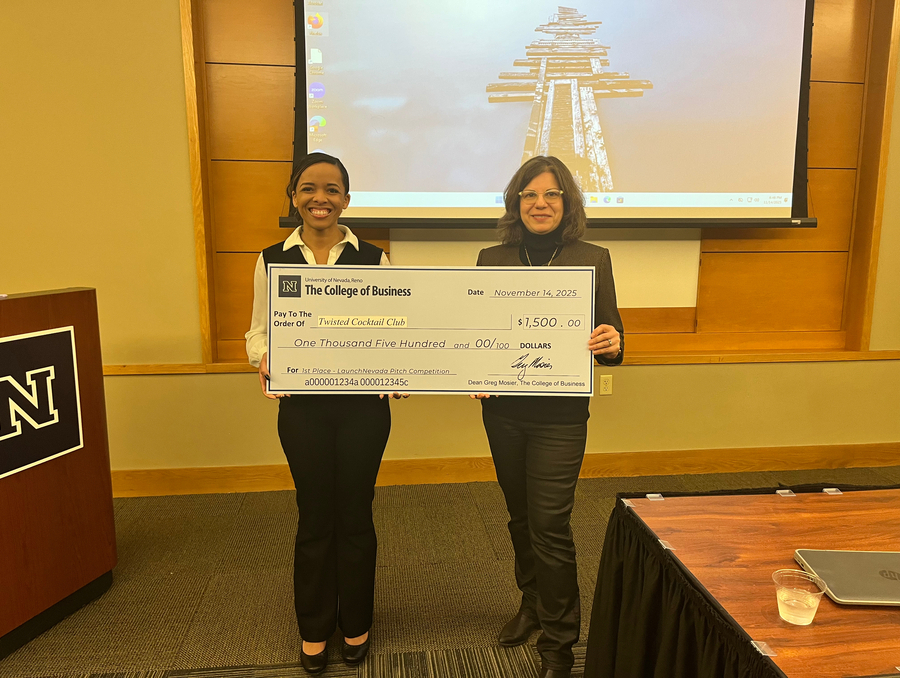How accessible and compliant is your social media?
On Global Accessibility Awareness Day, it's important to manage your account with University brand and reputation in mind
By now, faculty and staff at the University should be familiar with web accessibility and know that accessibility across the University’s web presence is a strategic priority for the institution. In June 2017, President Johnson shared with campus the many efforts put in place to fully support “persons with disabilities having an opportunity equal to that of their nondisabled peers to participate in the University's programs, benefits and services.”
This ongoing effort to ensure equity across digital platforms is being realized with the University’s central website, which has undergone a complete rebuild in order to meet WCAG 2.0 guidelines (the gold standard in web accessibility). Additionally, policies and procedures have been put in place for web governance, accessibility training, support for faculty from Teaching & Learning Technologies and more.
The elephant in the room
Digital technologies are an essential function – especially now, in the era of COVID-19. While many of us are working and learning from home, it is important to consider all of the channels we use to communicate with our students, faculty and staff. At the University, anyone who maintains social media sites on behalf of the institution needs to evaluate the accessibility of their social media programs and work to ensure content is accessible.
Optimizing social media content for accessibility helps ensure all users can navigate what you are trying to communicate. While the ability to optimize your content for accessibility across social media can vary by channel, here are five high-level guidelines relevant to all social media platforms. These guidelines offer a starting point to making your content more accessible.
- Provide contact information on your account page or a link to your course/website with contact information. This simple tip helps ensure people know who to reach out to in the event they have questions about your content.
- Provide links to the social media platform’s accessibility tips and support, if possible.
- Provide enough color contrast. This is especially important in social media “stories.”
- Use plain language. Provide clear instructions, avoid undefined technical jargon and spell out acronyms and abbreviations.
- Use CamelCase in your hashtags. Capitalize the first letter of words in multiple word hashtags to help screen readers distinguish separate words (e.g. #WolfPack or #BattleBorn). This format is also easier for fully sighted users to read.
Find additional social media accessibility best practices on the University social media site.
Policies to support your efforts
The University has two social media policies in place: UAM 7,009, which governs social media content on University accounts and UAM 7,013, which governs University social media account creation. These policies are in place to help the University maintain its online brand and reputation across social media.
Social media is a tool, not a solution
There are hundreds of social media accounts using the University of Nevada, Reno name and brand in one way or another. In fact, there’s a social media account for just about anything you might be interested in here at the University – all colleges and divisions have multiple social media accounts, as does University Athletics.
Many social media accounts across the University get created in haste, with little to no strategy behind them. As a result they quickly become inactive or irrelevant. Additionally, some University social media pages have lost account administrators as the people who managed them moved on and took the account, and the account’s followers, with them. In most cases, attempts to recover those University accounts fail.
UAM 7,013 is intended to govern the creation, use and management of official University Social Media Sites: Social media accounts or sites on any social media platform used in support of the function or needs of a University College, School or Division, as well as the Departments or Units within each of them.
Let’s use the College of Business as an example. This policy applies to any social media account “owned” by the college. Meaning, any account that uses the University’s name, the college’s name or even a department’s name from within the college. So, if the University’s Department of Economics has a Facebook page, as an example, that page would fall under the policy.
What this policy does not apply to are any student club or organization social media pages or any personal faculty pages. Personal social media pages of students, faculty and staff are exempt from this policy.
To be in compliance:
- All University social media pages shall be registered with the Office of Marketing and Communications. This can be done online via the “Social media registration button” on the University social media site. Social media accounts not registered to this site by the end of the Fall 2020 semester will be removed from the University’s website.
- Three fulltime faculty or staff members shall be made account administrators to the social media channels “owned” by the University, College, School or Division, as well as the Departments or Units within each of them. One of the three faculty members should be on the Social Media Leadership Team. This is to help ensure the sustainability of the account as student employee, faculty or staff turnover occurs.
Where can I get help?
The University’s Office of Marketing and Communications has put resources in place to help those on campus managing University social media accounts and to navigate social media accessibility. It has created a Social Media Leadership Team with representatives from almost all colleges, units and divisions on campus. This team is leading the charge on campus to educate others about social media accessibility and policies and offer input on sound social media guidelines and strategy. Be sure to reach out to your Social Media Leadership Team member, if you haven’t already, and as you have questions.
What these policies are not
The University recognized the importance of using social media to communicate. These policies were NOT put in place to control or monitor student, faculty and staff social media use. They are also designed to help ensure University social media use is in compliance with other key policies on campus including but not limited to copyright and fair use, protection of confidential and proprietary information, electronic accessibility and computing and network use policies.














